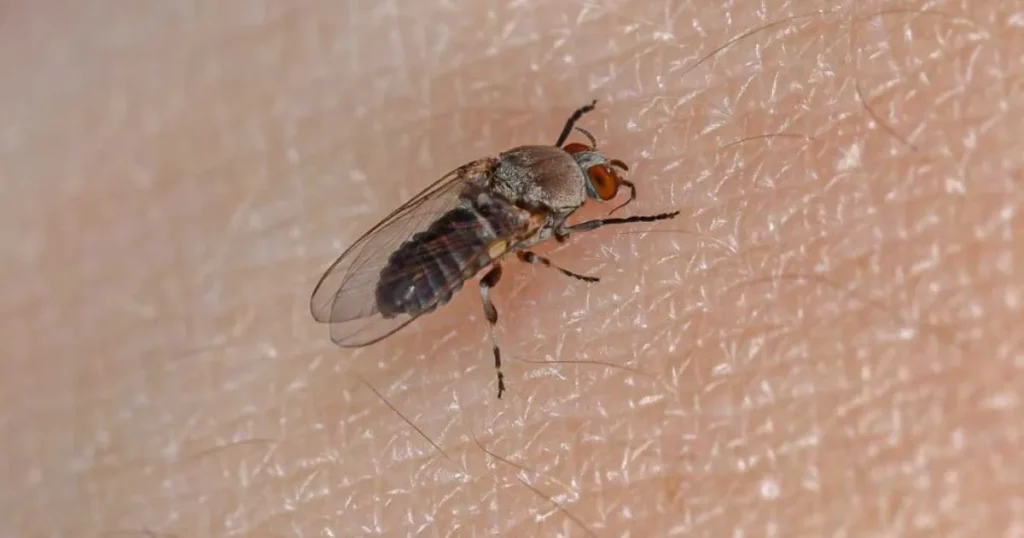Picture a serene summer evening, a gentle breeze, and the warmth of the setting sun. Unfortunately, this idyllic scene can be disrupted by an unwelcome guest – gnats. These tiny, flying insects may seem harmless, but their bites can be an irritating nuisance. In this comprehensive guide, we’ll delve into the world of gnat bites, exploring prevention strategies, treatment options, and providing you with valuable insights to make those pesky encounters more bearable.
Table of Contents
Gnats and Their Bites
Gnats, scientifically known as Ceratopogonidae, are small, flying insects that often thrive in humid environments. While they play a role in pollination, their bites can leave you with itchy and uncomfortable skin reactions. Gnats are particularly prevalent during the warmer months, making it essential to understand their behavior and how to protect yourself.
Prevention Strategies
1. Wear protective clothing
One effective way to ward off gnats is by wearing long sleeves, pants, and hats. This creates a physical barrier between you and these pesky insects, minimizing the chances of bites.
2. Use insect repellent
Applying a reliable insect repellent containing DEET or picaridin can significantly reduce the likelihood of gnat bites. Make sure to reapply the repellent as directed, especially if you’re spending an extended period outdoors.
3. Avoid peak gnat activity times
Gnats are most active during dawn and dusk. If possible, plan your outdoor activities during other times of the day to minimize your exposure to these tiny pests.
4. Eliminate standing water
Gnats breed in moist environments. Ensure there is no standing water around your home, as this reduces their breeding grounds and decreases the gnat population.
Anecdote: Sally, an avid gardener, discovered that wearing a wide-brimmed hat not only protected her from the sun but also significantly reduced the number of gnat bites on her face and neck during her gardening sessions.
Treatment Options for Gnat Bites
1. Clean the affected area
When bitten by a gnat, it’s crucial to clean the area with mild soap and water. This helps prevent infection and alleviates itching.
2. Apply a cold compress
Reduce swelling and soothe the affected area by applying a cold compress. This can be a bag of frozen peas or a cloth soaked in cold water.
3. Use over-the-counter creams
Topical creams containing ingredients like hydrocortisone can provide relief from itching. Apply these creams as directed to the affected areas.
4. Take oral antihistamines
If gnat bites cause significant discomfort, consider taking an oral antihistamine to alleviate itching and inflammation.
Anecdote: James, an outdoor enthusiast, swears by the effectiveness of applying a mixture of baking soda and water on gnat bites. He stumbled upon this remedy during a camping trip and found it to be a game-changer in relieving irritation.
Introducing “GnatGuard”: Your Ultimate Defense
In the quest to make your outdoor experiences more enjoyable, we proudly present GnatGuard – the ultimate solution to protect yourself from gnat bites. This scientifically formulated insect repellent is designed to keep gnats at bay, ensuring you can savor every moment outdoors without the distraction of itchy bites.
Why Choose GnatGuard?
1. Long-lasting Protection
GnatGuard provides extended protection, allowing you to focus on the beauty of the outdoors instead of worrying about insect bites.
2. Gentle on the Skin
Formulated with care, GnatGuard is gentle on the skin while effectively repelling gnats. Say goodbye to sticky and uncomfortable insect repellents.
3. Easy Application
The convenient spray bottle ensures easy and even application, covering exposed skin to create a reliable barrier against gnats.
4. Multipurpose Use
Whether you’re hiking, camping, gardening, or simply enjoying a picnic, GnatGuard is your versatile companion for any outdoor activity.
Anecdote: Emily, a nature enthusiast, shares her experience with GnatGuard during a recent hiking expedition. “I applied GnatGuard before hitting the trail, and not a single gnat bothered me. It made my hike so much more enjoyable!”
How to Use GnatGuard – A Step-by-Step Guide
Step 1: Shake well: Before use, shake the GnatGuard bottle well to ensure an even distribution of the repellent.
Step 2: Spray evenly: Hold the bottle about 6-8 inches away from your skin and spray evenly on exposed areas. Pay extra attention to ankles, wrists, and neck.
Step 3: Reapply as needed: For extended outdoor activities, reapply GnatGuard as directed to maintain optimal protection.
Step 4: Enjoy the outdoors: With GnatGuard as your trusted companion, embrace the outdoors without the worry of gnat bites.
Conclusion
Understanding gnats and taking proactive measures to prevent and treat their bites can significantly enhance your outdoor experiences. From wearing protective clothing to using effective repellents like GnatGuard, there are various strategies to keep these tiny insects at bay.
Remember, the key is to be prepared and take action before heading outdoors. By incorporating these tips into your routine, you can confidently enjoy the beauty of nature without the constant annoyance of gnat bites. So, gear up, apply your repellent, and step outside with the assurance that your outdoor adventures will be itch-free and truly enjoyable.
Related Frequently Asked Questions
1. Q: Can gnat bites cause more than just itching?
A: While gnat bites are generally harmless, some individuals may experience more severe reactions. In rare cases, gnat bites can lead to localized swelling or allergic reactions. If you notice unusual symptoms, consult a healthcare professional.
2. Q: Are gnats attracted to specific scents or colors?
A: Gnats are attracted to various scents, such as sweet or fruity fragrances. Additionally, they are drawn to dark colors. Wearing light-colored clothing and avoiding strongly scented products can help reduce the risk of gnat bites.
3. Q: How long does the itching from gnat bites typically last?
A: The duration of itching from gnat bites varies from person to person. In most cases, the itching subsides within a few days. Using over-the-counter creams and cold compresses can help alleviate discomfort.
4. Q: Can I use GnatGuard on children and pets?
A: GnatGuard is formulated to be gentle on the skin, making it suitable for use on children. However, it’s recommended to consult with a pediatrician before applying any insect repellent on young children. GnatGuard is not intended for use on pets.
5. Q: How effective is GnatGuard against other biting insects?
A: While GnatGuard is specifically designed to repel gnats, it also provides protection against other biting insects, such as mosquitoes and flies. The unique formulation acts as a broad-spectrum repellent, ensuring a comprehensive defense during your outdoor activities.
- The Complete Intermittent Fasting Guide for Beginners - September 11, 2024
- Blue Lotus Flower: Unlocking the Benefits, Uses and Safety - April 25, 2024
- How To Get Enough Protein On A Plant-Based Diet - April 5, 2024



